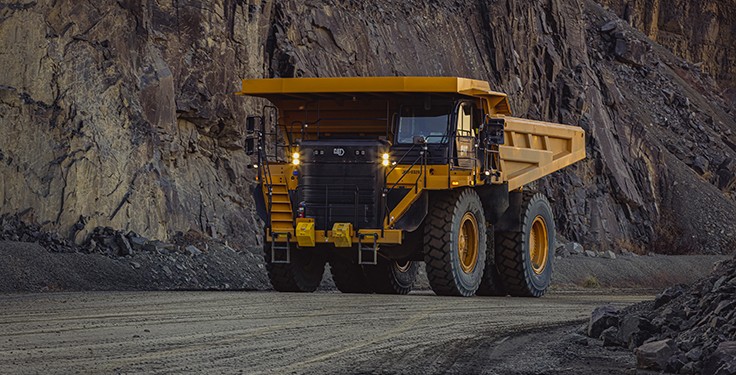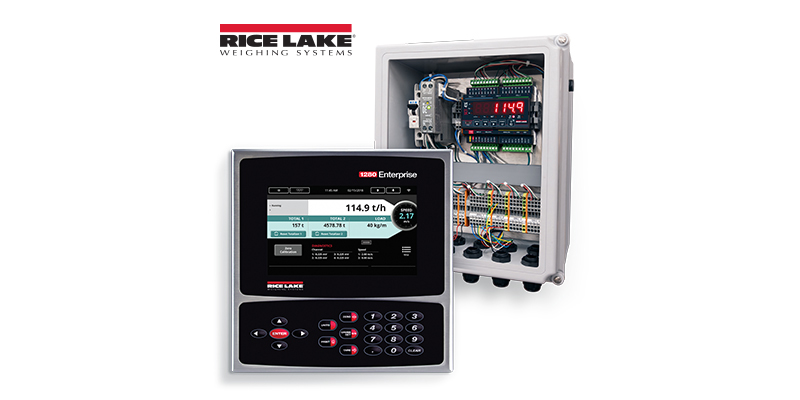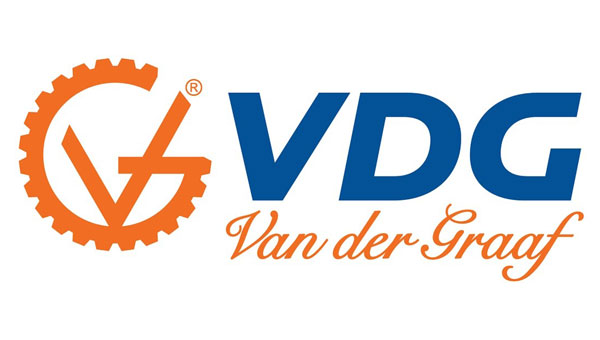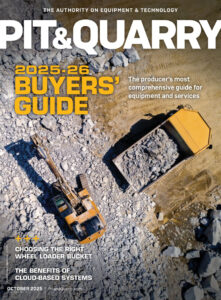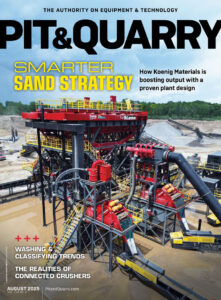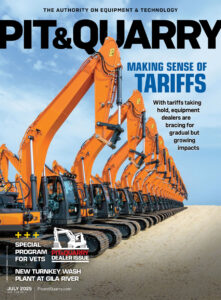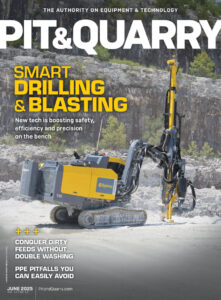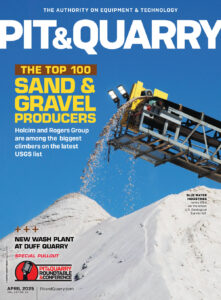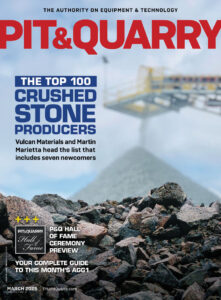
Will a day arrive when every hauler in America’s pits and quarries is operated autonomously?
Never say never.
Realistically, though, progress continues to be made toward more mainstream use of autonomous hauling technologies in aggregates. Luck Stone’s experience with Caterpillar tech on 777 trucks is among the latest examples to illustrate real-world possibilities.
At midsummer, Caterpillar reported that Luck Stone had reached the 1 million-tons-hauled-autonomously milestone at the Bull Run Plant in Chantilly, Virginia – a mark achieved after the companies embarked on the special project just two and a half years earlier.
The 1 million-ton achievement is a first in aggregates for Cat, whose trucks have been deployed autonomously in larger mining applications around the world for years. Now, however, the nation’s largest family-owned aggregate producer is proving the viability of autonomy with one of the market-share leaders in the off-highway haul truck space.
“At Luck Stone, our mission is to ignite human potential, and this project is an example of what’s possible when people, purpose and progress come together,” says Charlie Luck, president and CEO of Luck Companies. “We’re grateful to Caterpillar and confident that operators across the country will have a similar experience.”
Read more: Luck Stone, Caterpillar reach autonomous hauling milestone
The coming years
So, what’s next for autonomy in aggregates? Luck Stone and Cat, for one, plan to continue their autonomy exploration at additional sites. The project at the Bull Run Plant involved 100-ton-class haulers, meaning Luck Stone and Cat, in a sense, proved a case for autonomy at the largest aggregate operations nationwide.
Smaller haul trucks will likely take center stage in future industry projects if autonomy is to become mainstream at the typical crushed stone or sand and gravel operation.
Luck Stone, of course, isn’t the only U.S. producer exploring autonomy in an aggregate application. The company has certainly been the most transparent about its work, but other producers – including CRH and Heidelberg Materials – have at least shared publicly how they’re active in this area.
“Meeting industry challenges with technological innovation has always been a central part of our target to create a more productive and sustainable future,” says Dominik von Achten, chairman of the managing board at Heidelberg Materials, whose company detailed earlier this year how it intended to deploy more than 100 autonomous haulers around the world through an agreement with Pronto.
Many of the nation’s other mega producers are involved in autonomy to one degree or another, as well. While most haven’t shared their experiences publicly, the technology providers operating in this space say as much.
Undoubtedly, the future is upon us.

